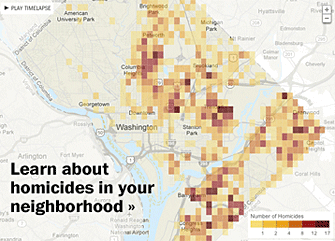2 p.m. update: Isaac’s pressure dropped from 988 to 984 mb, its lowest yet. It remains a strong tropical storm but is closer to becoming a hurricane.

Satellite image showing Isaac approaching the Gulf coast.
(NOAA/NESDIS)
After tropical storm’s Isaac’s deadly romp across Haiti and eastern Cuba, then the prolonged (yet relatively benign) passage by southern Florida, it is now in the east-central Gulf of Mexico poised to become a hurricane.
It’s headed towards the northern Gulf Coast where it has the potential to produce destructive winds, a dangerous storm surge and flooding rains.
At 11 a.m. EDT, the intensity was still 65mph, 9 mph shy of the hurricane threshold. It is located 215 miles west of Fort Myers, FL, and 390 miles southeast of New Orleans, LA, moving towards the northwest at 14 mph.
Florida effects

Peak wind gusts today in Florida from National Weather Service and WeatherBug observing stations
(WeatherBug)
Across southern Florida, gusts have reached 50-80 mph, leading to about 70,000 scattered power outages (23,000 in Miami-Dade)..

Three-day rainfall totals across Florida.
(NOAA/NWS)
The rain was been the big story, and the forecasts have panned out pretty well, with large swaths receiving 5-8” of rain and localized reports of over 12” in Palm Beach county. The graphic to the right shows the rainfall totals over the past three days, including data up to 9 a.m .this morning. Large rainbands continue to rake across the state as Isaac pulls away and isolated embedded tornadoes are possible.
Republican National Convention (RNC)
As far as the RNC in Tampa goes, today was supposed to have been the opening day of the event, but the threat of tropical storm or hurricane conditions forced the planners to suspend the beginning until Tuesday... compressing the 4-day convention into 3 days. Over the past day, wind gusts have reached 25 mph accompanied by heavy rain. For the most part, convention-goers were spared what could have been much more severe conditions and storm surge.

Tracks of Katrina and Isaac.
(UM/RSMAS.)
Isaac versus Katrina
Isaac is on a very similar track as Katrina was seven years ago. However, Isaac will almost certainly not become a monster Category 5 storm in the central Gulf. Katrina weakened to a Category 3 hurricane as it made landfall just east of New Orleans during the early morning hours of August 29, 2005. Only some of the destruction occurred during the storm, but the bulk came after the storm passed and the storm surge overwhelmed and breached the levees, allowing parts of the city to fill with sea water.
Related: Tropical storm Isaac inches towards hurricane strength, all eyes on New Orleans
There are no models predicting Isaac to be any more than a Category 2 storm at landfall, though even a storm of that intensity that must be taken very seriously. The figure above has Katrina’s track as well as Isaac’s track plotted. Katrina’s is the one that came into Miami, intensified tremendously over the Gulf, then hit eastern Louisiana. Isaac skimmed northen Cuba, passed west of the Keys, and is making a direct path for the same area that Katrina hit... within hours of the infamous anniversary.
Storm impacts and warnings

The latest watches and warnings along the northern Gulf coast. Hurricane warnings are in red, and tropical storm warnings are in blue.
(NOAA/NHC)
As of the 11 a.m. EDT National Hurricane Center advisory, hurricane warnings now cover the eastern half of LA, all of MS and AL, and the extreme western FL panhandle. Mandatory evacuations are already in place for some areas in Louisiana, and I suspect more will come today.
Tropical storm conditions should begin to affect the area as early as this evening, and hurricane conditions could begin by midday Tuesday. As always, keep in mind that the white cone represents an average track error, and severe conditions will occur well outside of the cone.
Link: Interactive hurricane tracker
While rainfall and winds will inevitably cause damage, the northern Gulf coast is very prone to large storm surge. The storm surge is water pushed ashore by the storm’s winds... when it reaches the coast, it has nowhere to go but inland. The flatter the land is, the further inland the water can reach.

Storm surge depths (in feet) from the SLOSH model run early Monday morning. Storm surge is extremely sensitive to the exact track, translation speed, and intensity, so any nudge at all to the storm’s forecast will alter this surge forecast.
(NOAA/NHC)
The exact timing of the landfall can make the storm surge even larger if it occurs during high tide. It’s still a little too far out to determine reliable surge depths, but as of the latest model run, extreme eastern LA and MS could see a 6-12’ storm surge, and perhaps 4-6’ in Mobile Bay, AL.
Brian McNoldy is a senior researcher at the University of Miami’s Rosenstiel School of Marine and Atmospheric Science.


















Loading...
Comments